Do you have a question about the Siemens SIRIUS 3RW50 and is the answer not in the manual?
Identifies the intended audience and required knowledge for using the manual.
Illustrates and labels the physical components and connection points of the soft starter.
Explains the soft starter's function for smooth motor starting, ramp-up, and stopping.
Details the methods and devices for interacting with and controlling the soft starter.
Describes different operating modes and how master control is assigned to various sources.
Presents information on different physical sizes and versions of the 3RW50 soft starter.
Lists typical applications and load types suitable for the soft starter's features.
Guides on using the STS software to select the appropriate soft starter for an application.
Explains the coding system used in the article numbers for soft starter variants.
Lists and describes the various accessories available for the 3RW50 soft starter.
Provides references to other relevant manuals and online resources for further information.
Information on accessing Siemens' online support portal for product information and services.
Details how to submit a technical support request through the online portal.
Provides essential guidelines for handling electrostatic discharge sensitive (ESD) devices safely.
Explains requirements and precautions for connecting capacitors for power factor correction.
Lists and explains the five fundamental safety rules to prevent electrical accidents.
Specifies EMC design requirements for Environment A and potential mitigation measures.
Details recommendations for securing systems, networks, and products against cyber threats.
Covers ATEX/IECEx certification, usage in hazardous areas, and motor overload protection.
Advises on methods to protect operator controls from unauthorized access to prevent hazards.
Provides guidance on environmentally friendly recycling and disposal of electrical and electronic devices.
Provides a step-by-step procedure for the correct installation of the 3RW50 soft starter.
Instructions for attaching the optional fan cover accessory to the soft starter.
Details the requirements and procedure for securely mounting the soft starter on a flat surface.
Guides on connecting the Human-Machine Interface (HMI) cable to the soft starter.
Instructions for installing and removing the 3RW5 communication module.
Provides an overview of all terminal connections, inputs, and outputs on the soft starter.
General procedure for connecting the soft starter, including safety warnings and optional accessories.
Detailed instructions for connecting the main power supply and motor to the soft starter.
Procedures for attaching and removing box terminal blocks used for electrical connections.
Steps for installing terminal covers to provide touch protection on main circuit connections.
Instructions for connecting control wiring using screw-type terminals.
Procedure for safely disconnecting the control current from screw-type terminals.
Instructions for connecting control wiring using spring-type terminals.
Procedure for safely disconnecting the control current from spring-loaded terminals.
Steps for safely removing and replacing control terminals on the soft starter.
Instructions for connecting the COM cable between the soft starter and communication module.
Identifies and explains the function of the physical setting elements on the soft starter.
Lists and describes all available parameters, their symbols, setting ranges, and factory settings.
Provides recommended parameter settings for various common applications.
A step-by-step guide for configuring the soft starter's parameters using its setting elements.
Explains how to set the RESET MODE and activate/deactivate the Soft Torque function.
Details the different RESET MODE options for fault acknowledgement and their effects.
Instructions on how to configure the relay output for ON or RUN signal status.
Procedure for entering parameterizing mode using the soft starter's keypad.
Explains the physical layout, controls, and display elements of the High Feature HMI.
Overview of the menu structure and navigation options available on the HMI.
Guides on configuring the analog output (AQ) signal using the High Feature HMI.
Details various parameters that can be configured through the High Feature HMI.
Outlines the essential steps required to commission the soft starter for operation.
Instructions on how to seal the soft starter's hinged cover for tamper protection.
Steps for the initial setup and language selection of the High Feature HMI.
Explains the soft starting function, including voltage and torque characteristics.
Details the function to limit motor starting current and its benefits.
Explains the smooth ramp-down feature for controlled motor stopping.
Covers electronic motor overload protection and thermistor protection with temperature sensors.
Explains the internal protection mechanisms of the soft starter against overload.
Details the Soft Torque function for controlled acceleration and deceleration.
Specifics for motor overload protection in ATEX/IECEx certified applications.
Describes additional parameters like ambient temperature settings and test modes.
Procedure and principle for performing a test with a small load before full installation.
Explains how digital inputs affect master control behavior during bus connection failures.
Details the design, navigation, and menu structure of the Standard 3RW5 HMI.
Covers monitoring, diagnostics, and parameter settings for the High Feature HMI.
Lists the available options for diagnosing the soft starter's status and faults.
Explains the meaning of the LEDs on the soft starter and HMI for status indication.
Lists common warnings, their causes, and recommended remedial actions.
Details faults, their causes, remedies, and reset mode options for the soft starter.
Lists faults specific to the 3RW5 HMI High Feature and their corresponding remedies.
Explains the effects of the RESET MODE setting on fault acknowledgement.
Guides on performing diagnostic checks using the High Feature HMI.
Instructions for diagnosing the communication module via the High Feature HMI.
Procedure for executing diagnostic tests on the HMI itself.
Details the self-test procedure and interpretation of results for the soft starter.
Explains the function and usage of logbooks for recording events, warnings, and faults.
Information on permissible maintenance and repair procedures by qualified personnel.
Provides instructions and procedures for updating the device firmware.
Step-by-step guide for updating firmware using a micro SD card via the HMI.
Explains the effects and procedures for restoring the device to factory default settings.
Information on how to access detailed technical data via Siemens Industry Online Support.
Information on how to find CAx data (e.g., CAD files) via Siemens Industry Online Support.
Provides drilling dimensions for mounting the 3RW5 HMI Standard with push-in lugs.
Provides drilling dimensions for mounting the 3RW5 HMI High Feature with push-in lugs.
Drilling patterns for mounting communication modules on soft starter sizes S6 and S12.
Information on how to access circuit diagrams and CAx data via Siemens Industry Online Support.
Illustrates main circuit connections for different feeder assembly types and coordination.
Wiring diagrams for various control methods like pushbuttons, switches, PLC, and sensors.
Details wiring configurations for specific applications like ATEX/IECEx and emergency stop systems.
Details on third-party software components, licenses, and copyright notices.
Identifies the intended audience and required knowledge for using the manual.
Illustrates and labels the physical components and connection points of the soft starter.
Explains the soft starter's function for smooth motor starting, ramp-up, and stopping.
Details the methods and devices for interacting with and controlling the soft starter.
Describes different operating modes and how master control is assigned to various sources.
Presents information on different physical sizes and versions of the 3RW50 soft starter.
Lists typical applications and load types suitable for the soft starter's features.
Guides on using the STS software to select the appropriate soft starter for an application.
Explains the coding system used in the article numbers for soft starter variants.
Lists and describes the various accessories available for the 3RW50 soft starter.
Provides references to other relevant manuals and online resources for further information.
Information on accessing Siemens' online support portal for product information and services.
Details how to submit a technical support request through the online portal.
Provides essential guidelines for handling electrostatic discharge sensitive (ESD) devices safely.
Explains requirements and precautions for connecting capacitors for power factor correction.
Lists and explains the five fundamental safety rules to prevent electrical accidents.
Specifies EMC design requirements for Environment A and potential mitigation measures.
Details recommendations for securing systems, networks, and products against cyber threats.
Covers ATEX/IECEx certification, usage in hazardous areas, and motor overload protection.
Advises on methods to protect operator controls from unauthorized access to prevent hazards.
Provides guidance on environmentally friendly recycling and disposal of electrical and electronic devices.
Provides a step-by-step procedure for the correct installation of the 3RW50 soft starter.
Instructions for attaching the optional fan cover accessory to the soft starter.
Details the requirements and procedure for securely mounting the soft starter on a flat surface.
Guides on connecting the Human-Machine Interface (HMI) cable to the soft starter.
Instructions for installing and removing the 3RW5 communication module.
Provides an overview of all terminal connections, inputs, and outputs on the soft starter.
General procedure for connecting the soft starter, including safety warnings and optional accessories.
Detailed instructions for connecting the main power supply and motor to the soft starter.
Procedures for attaching and removing box terminal blocks used for electrical connections.
Steps for installing terminal covers to provide touch protection on main circuit connections.
Instructions for connecting control wiring using screw-type terminals.
Procedure for safely disconnecting the control current from screw-type terminals.
Instructions for connecting control wiring using spring-type terminals.
Procedure for safely disconnecting the control current from spring-loaded terminals.
Steps for safely removing and replacing control terminals on the soft starter.
Instructions for connecting the COM cable between the soft starter and communication module.
Identifies and explains the function of the physical setting elements on the soft starter.
Lists and describes all available parameters, their symbols, setting ranges, and factory settings.
Provides recommended parameter settings for various common applications.
A step-by-step guide for configuring the soft starter's parameters using its setting elements.
Explains how to set the RESET MODE and activate/deactivate the Soft Torque function.
Details the different RESET MODE options for fault acknowledgement and their effects.
Instructions on how to configure the relay output for ON or RUN signal status.
Procedure for entering parameterizing mode using the soft starter's keypad.
Explains the physical layout, controls, and display elements of the High Feature HMI.
Overview of the menu structure and navigation options available on the HMI.
Guides on configuring the analog output (AQ) signal using the High Feature HMI.
Details various parameters that can be configured through the High Feature HMI.
Outlines the essential steps required to commission the soft starter for operation.
Instructions on how to seal the soft starter's hinged cover for tamper protection.
Steps for the initial setup and language selection of the High Feature HMI.
Explains the soft starting function, including voltage and torque characteristics.
Details the function to limit motor starting current and its benefits.
Explains the smooth ramp-down feature for controlled motor stopping.
Covers electronic motor overload protection and thermistor protection with temperature sensors.
Explains the internal protection mechanisms of the soft starter against overload.
Details the Soft Torque function for controlled acceleration and deceleration.
Specifics for motor overload protection in ATEX/IECEx certified applications.
Describes additional parameters like ambient temperature settings and test modes.
Procedure and principle for performing a test with a small load before full installation.
Explains how digital inputs affect master control behavior during bus connection failures.
Details the design, navigation, and menu structure of the Standard 3RW5 HMI.
Covers monitoring, diagnostics, and parameter settings for the High Feature HMI.
Lists the available options for diagnosing the soft starter's status and faults.
Explains the meaning of the LEDs on the soft starter and HMI for status indication.
Lists common warnings, their causes, and recommended remedial actions.
Details faults, their causes, remedies, and reset mode options for the soft starter.
Lists faults specific to the 3RW5 HMI High Feature and their corresponding remedies.
Explains the effects of the RESET MODE setting on fault acknowledgement.
Guides on performing diagnostic checks using the High Feature HMI.
Instructions for diagnosing the communication module via the High Feature HMI.
Procedure for executing diagnostic tests on the HMI itself.
Details the self-test procedure and interpretation of results for the soft starter.
Explains the function and usage of logbooks for recording events, warnings, and faults.
Information on permissible maintenance and repair procedures by qualified personnel.
Provides instructions and procedures for updating the device firmware.
Step-by-step guide for updating firmware using a micro SD card via the HMI.
Explains the effects and procedures for restoring the device to factory default settings.
Information on how to access detailed technical data via Siemens Industry Online Support.
Information on how to find CAx data (e.g., CAD files) via Siemens Industry Online Support.
Provides drilling dimensions for mounting the 3RW5 HMI Standard with push-in lugs.
Provides drilling dimensions for mounting the 3RW5 HMI High Feature with push-in lugs.
Drilling patterns for mounting communication modules on soft starter sizes S6 and S12.
Information on how to access circuit diagrams and CAx data via Siemens Industry Online Support.
Illustrates main circuit connections for different feeder assembly types and coordination.
Wiring diagrams for various control methods like pushbuttons, switches, PLC, and sensors.
Details wiring configurations for specific applications like ATEX/IECEx and emergency stop systems.
Details on third-party software components, licenses, and copyright notices.
| Brand | Siemens |
|---|---|
| Model | SIRIUS 3RW50 |
| Category | Controller |
| Language | English |
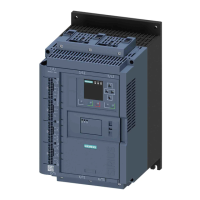
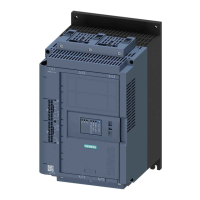

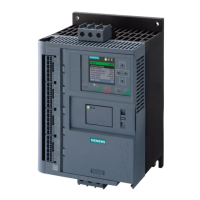

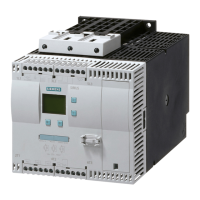
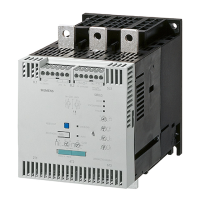
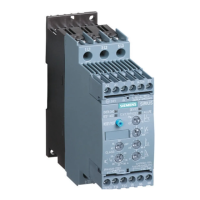

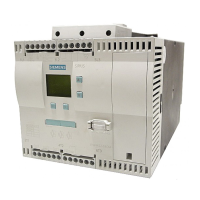
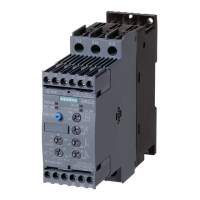
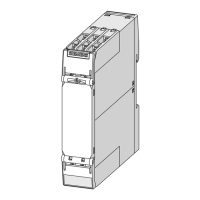
